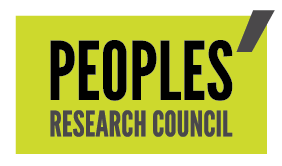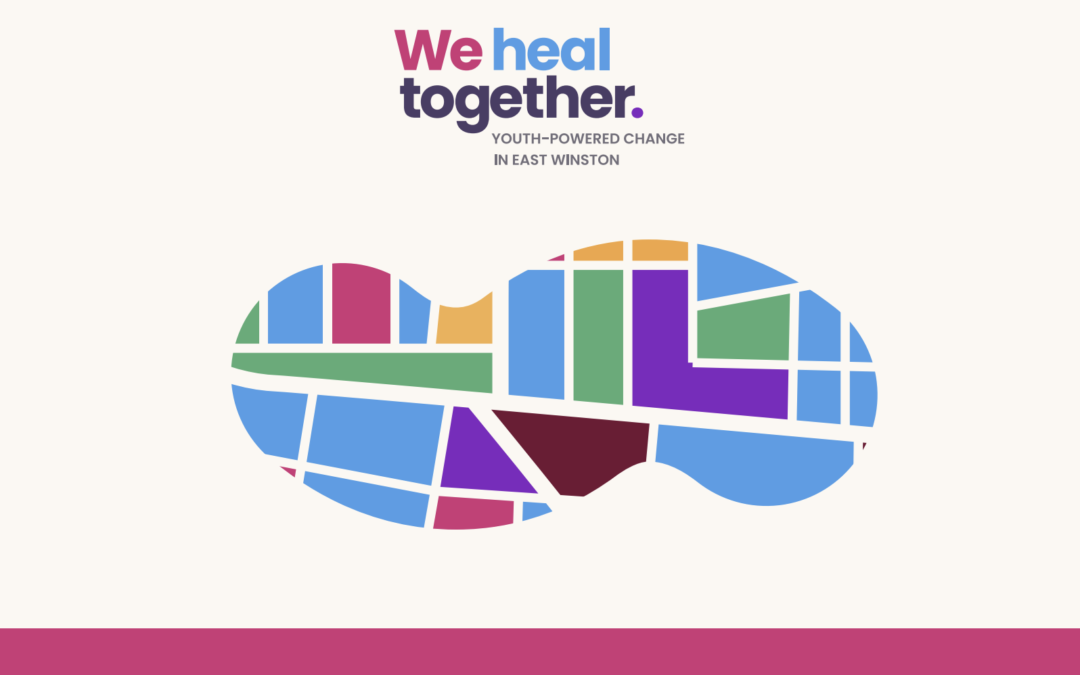This blog post is an update on the We Heal Together Initiative; a Peoples’ Research Council pilot project. For more information, click here.
As we begin the second year of the We Heal Together initiative, it’s a good time to look back on what we’ve accomplished and what we’ve learned. This initiative, supported by a $4 million grant from the Substance Abuse and Mental Health Services Administration (SAMHSA), is a partnership among Action4Equity, Crossnore’s Center for Trauma Resilient Communities, Forsyth Futures, and the Peoples’ Research Council. The goal is to tackle issues of collective trauma, community violence, and civil unrest in East Winston-Salem, focusing on supporting youth and their families.
Year One: Setting the Stage
In our first year, we concentrated on understanding the needs of our community and laying a strong foundation for the work ahead. A big part of this effort was creating two key documents: the Community Needs Resource Assessment (CNRA) and the Community Strategic Plan (CSP).
The CNRA is a detailed document that captures the voices and perspectives of people who call East Winston home. We gathered information for the CNRA using a variety of methods, including reviewing existing published information, reading resource directories, interviewing local organizations, and inviting community members to share their perspectives through focus groups, community meetings, and dot surveys. The goal was simple: to make sure We Heal Together’s approach is firmly rooted in the real-life experiences of East Winston-Salem communities.
Building on the CNRA, the Community Strategic Plan (CSP) was developed to guide the initiative’s activities for the remainder of the project. The CSP outlines We Heal Together’s mission, vision, and values, and it sets clear goals and objectives for how we will continue to address the needs identified in the CNRA. The CSP is a roadmap to help ensure our efforts are aligned with the community’s priorities, focusing on areas such as increasing youth and family engagement, reducing high-risk behaviors, and building stronger, trauma-informed support systems.
As we move into year two we will focus on communicating the valuable insights gathered through the CNRA and the CSP and sharing these messages in accessible and engaging ways in the community to increase awareness, understanding, and engagement around efforts for positive change.
Spotlight on Full Circle Mentoring
One of the standout successes from our first year has been the Full Circle Mentoring Program. With 56 young people enrolled, this program goes beyond traditional mentoring by offering a wide range of services and activities, from educational support to creative outlets like dance competitions, team sports, and art events. The program has also involved over 257 active family engagements and 83 active school engagements, highlighting the importance of community and family involvement in supporting our youth.
Full Circle has been crucial in providing essential resources to families, such as mental health screenings, food and clothing assistance, and legal help. By addressing both academic and personal needs, we’re helping our youth to grow and succeed in all areas of their lives.
Trauma-Resilience Trainings
A key component of the We Heal Together initiative has been trauma-resilience trainings provided by Crossnore’s Center for Trauma Resilient Communities (CTRC). These trainings are designed to equip our community with the knowledge and tools needed to respond to trauma in ways that foster healing and resilience.
In the first year of the initiative, the CTRC collaborated with eight backbone agencies to deliver a series of impactful trainings.
-
-
-
- Three Youth Mental Health First Aid sessions were completed, with additional sessions scheduled for August and September, aimed at helping community members, first responders, and school staff recognize and respond to signs of mental health challenges in youth.
- Additionally, two intensive, three-day TRC Engagement trainings were conducted, with a third planned for August, focusing on embedding trauma-informed practices within organizations to ensure staff can engage with individuals in ways that promote resilience and healing.
- To further support these efforts, an Embedding Champion Training is scheduled for September, aiming to create community leaders who will sustain trauma-informed practices within their organizations.
- To reinforce the skills learned, three booster sessions have already been held, with another scheduled for August, helping participants stay engaged and continue growing in their trauma-resilience practices.
- Two wellness events were held to support the overall well-being of community members and participants, with two more planned for August and September.
-
-
As we move into Year Two, we are committed to expanding these trauma-resilience trainings even further, focusing on introducing more targeted efforts to address unmet needs within the community.
Led and Directed by the Communities We Serve
The Community Advisory Board (CAB) of the We Heal Together Initiative is aligned with the community participatory framework of the Peoples’ Research Council. It consists of East Winston residents who bring their lived experiences and insights to the table to help guide and advise on key decisions throughout the four-year grant, to help ensure the initiative stays true to the community’s needs and priorities.
In addition to the community members, local groups and institutions participate in the CAB to offer their expertise on local systems, policies, and funding, contributing to a well-rounded and informed decision-making process. The CAB meets regularly to help steer the project, address emerging challenges, and adjust strategies as needed to keep the initiative aligned with the evolving needs of the community.
In year two, we are building on the momentum we’ve established. This means supporting the evolving needs of the CAB and strengthening partnerships with key community programs like My Brother’s Keeper. We’ll continue to expand trauma resilience trainings through the Center for Trauma Resilient Communities, and we’ll introduce more targeted efforts to address unmet needs within the community, guided by the Community Strategic Plan. This includes working to remove barriers to resources, creating new opportunities, and deepening our commitment to trauma-informed practices. Throughout this process, we remain dedicated to empowering the community, promoting healing, and building trust.

